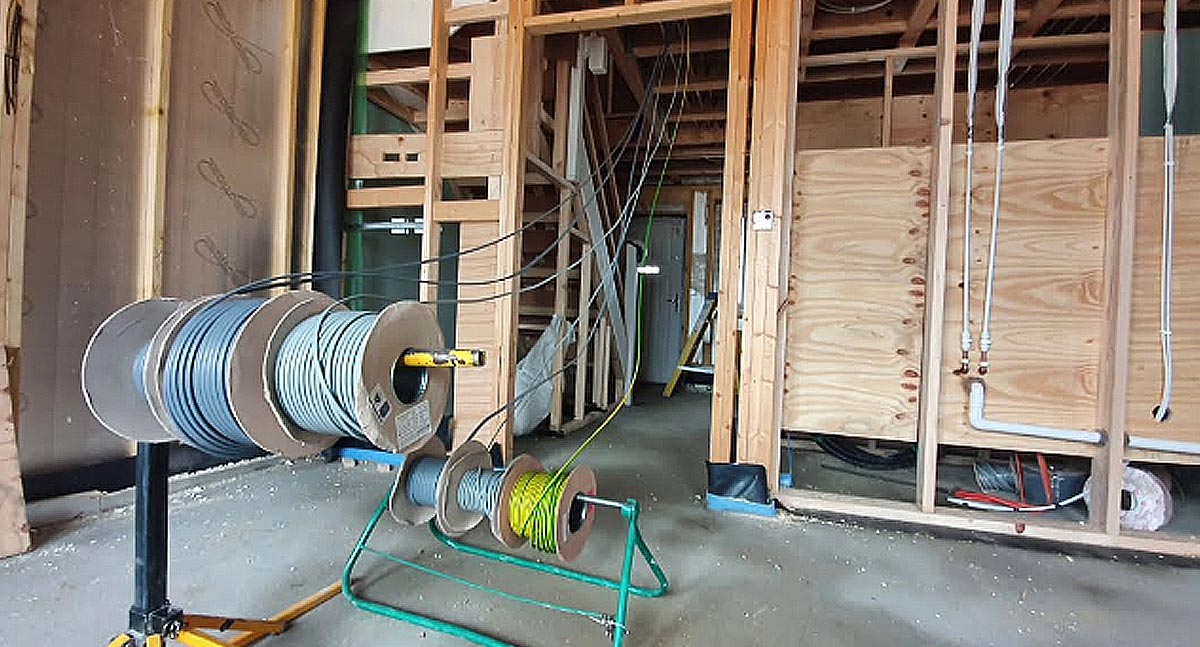Trusted and Specialist BRE Electrical Services for each Task
Trusted and Specialist BRE Electrical Services for each Task
Blog Article
The Ultimate Overview to Electrical Installment: Tips and Techniques for a Safe and Reliable Home Wiring System
In the world of home maintenance, few facets are as vital yet typically ignored as the electrical circuitry system. By checking out the subtleties of electric security actions and energy-saving methods, this extensive overview will drop light on the intricacies of home electrical wiring, empowering individuals to take cost of their family's electric facilities.
Recognizing Electrical Precaution
To guarantee the security of both people and property, understanding and executing proper electric safety procedures is paramount in any home circuitry task. Electrical energy is a powerful pressure that can be hazardous if not managed with care. Among the fundamental safety and security measures is ensuring that all electrical job is done by certified professionals who adhere to regional building ordinance and policies. It is essential to conduct a thorough assessment of the electric system before beginning any kind of circuitry job to determine prospective risks or problems that need to be resolved.
In addition, using the ideal devices and equipment is essential for maintaining safety and security during electrical installations. Protected gloves, voltage testers, and safety eyeglasses are a few of the basic safety equipment that ought to be used to avoid electrical shocks or accidents. It is additionally important to de-energize circuits before dealing with them and to label all circuits and breakers plainly to stay clear of complication.

Essential Tools for Home Wiring
Making sure the correct execution of electrical safety and security actions in home circuitry tasks entails utilizing a particular set of crucial devices developed to help with the setup process successfully and safely. Some of the key tools needed for home electrical wiring tasks consist of a voltage tester for examining live cords, cord pole dancers for eliminating insulation from cords, a cord cutter for specifically cutting wires to size, a screwdriver established for protecting electric elements, electrical tape for insulation and safeguarding links, a wire ripper for stripping cord sheathing, and a multimeter for determining voltage, current, and resistance.
Step-by-Step Electrical Setup Guide
Beginning an electrical installation task calls for precise preparation and adherence to safety and security standards. Prior to beginning any work, ensure you have an in-depth plan describing the layout of the electric system, including the positioning of electrical outlets, buttons, and components. Take into consideration the power needs of each gadget to identify the appropriate cable scale and breaker sizes.
The very first step in the installation procedure is to turn off the power supply to the area where you will be working. Utilize a voltage tester to validate that the circuits are de-energized before touching any kind of cables. Next, thoroughly remove existing components or outlets and disconnect the wires.
When installing brand-new electrical wiring, run wires through wall surfaces and ceilings, protecting them in area with proper installations. other Comply with neighborhood building regulations and maker instructions for correct cable setup and connections. BRE Services. See to it to label cords for simple recognition and future maintenance

Troubleshooting Common Circuitry Issues
Having actually completed the installation procedure as laid out in the previous subtopic, repairing typical electrical wiring issues is a necessary ability for making sure the security and functionality of your electric system. One typical concern is a stumbled circuit breaker, commonly brought on by overloaded circuits or a short circuit. To troubleshoot this, situate the breaker panel, recognize the tripped breaker by searching for the one not totally in the "on" setting, and reset it by flipping it totally to "off" and afterwards back to "on." One more prevalent trouble is a malfunctioning outlet, identified by no power or periodic power supply. Make certain the electrical outlet is not controlled by a button, then continue reading this make use of a voltage tester to inspect for power. If there is no power, switch off the circuit, inspect the circuitry connections for any kind of loose or broken cables, and replace the electrical outlet if needed. Continuously flickering lights can show loose circuitry connections or an overloaded circuit. To address this, check and tighten up all wire connections in the influenced components and switches and rearrange the read this article tons on the circuit to stabilize the electrical need. On a regular basis examining and promptly addressing these typical wiring problems will certainly maintain the security and efficiency of your home electric system.
Tips for Energy-saving Electric Equipments
For optimal power performance in electrical systems, applying wise techniques and using energy-saving innovations is paramount. One crucial tip for accomplishing an energy-efficient electric system is to update to LED illumination. Proper insulation and securing of home windows, doors, and electrical outlets can likewise prevent energy loss, inevitably minimizing the work on electrical systems.
Final Thought
In verdict, executing appropriate precaution, using crucial tools, complying with a step-by-step installation guide, fixing usual issues, and integrating energy-efficient ideas are crucial for a risk-free and efficient home circuitry system. By sticking to these techniques, house owners can make certain the longevity and performance of their electrical installments. It is very important to focus on safety and performance when it concerns electrical operate in order to avoid prospective risks and to preserve a dependable electric system in the home.
Report this page